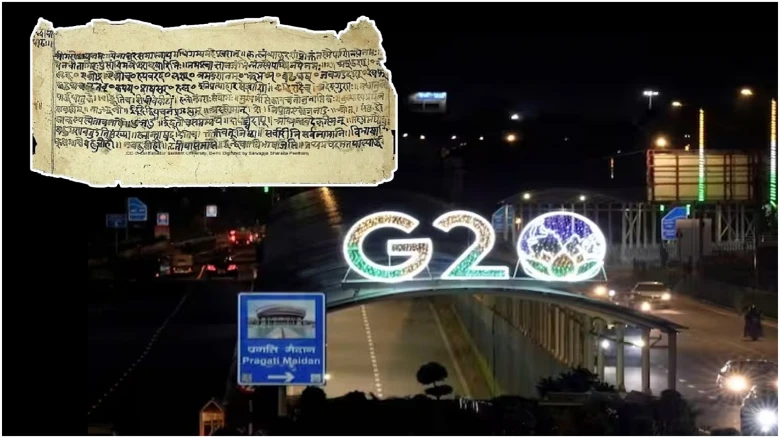A manuscript of the Rig Veda from India, is among the remarkable artifacts...
Digital Desk: India is set to host the G20 Summit, and in addition to discussions on international economics and policy, the event will also feature a special "Culture Corridor" that will showcase a diverse array of cultural artifacts, including manuscripts from the Rig Veda.
The Culture Corridor - G20 Digital Museum is an avant-garde "phygital" initiative that was conceptualized by India's Ministry of Culture while it held the G20 presidency. On September 9, the summit will begin and it will be unveiled at the Bharat Mandapam.
The G20 presidency theme, "Vasudhaiva Kutumbakum," highlighting the idea that the world is one family, is physically manifested in the "Culture Corridor." The initiative will serve as a G20 legacy project and a "museum in the making," showcasing cultural objects from all 20 G20 member countries and nine invited nations.
The goal of this immense exhibition is to provide visitors, including world leaders, with an immersive experience in global heritage through the presentation of a wide variety of items in both physical and digital formats. It will be a focal point of the summit experience because it will be situated on the same floor level as the leaders' sessions.
India welcomed countries in four categories and solicited submissions from each G20 member in order to complete this project. These categories comprise one tangible object of cultural significance, one "iconic cultural masterpiece" in digital form, high-resolution digital content depicting intangible heritage, and representations of the distinctively national natural heritage.
Physical items have been expertly preserved and are currently housed in New Delhi, despite being on loan for a brief time. These treasures will be unveiled at the Bharat Mandapam in the upcoming days in order to be ready for the summit. The exhibition's post-summit plans are still being thought through, but it is hoped that they will eventually be released to the public.
A manuscript of the Rig Veda from India, a book of enormous historical and religious significance, is among the remarkable artifacts slated for display. The Rig Veda manuscript will be exhibited in all its splendor, with a special emphasis on the shloka that encourages humanity to come together. It has been obtained from the Bhandarkar Oriental Research Institute in Pune.
The first four categories have received notable submissions from China, another significant G20 member. A democratic practices artifact, a fifth category included later in the project's development, it is yet to contribute.
India submitted a number of items under the intangible heritage category, including yoga, the Kumbh Mela, Vedic chanting, the lost wax bronze casting method, and the double ikkat weaving Patan Patola of Gujarat.
Visitors will be able to fully understand India's cultural diversity and richness by viewing these high-resolution photos and films.
Additionally, the Himalayas, the Ganges, the Indian Ocean, the Living Root Bridge of Meghalaya, and the Royal Bengal Tiger will all be highlighted as part of India's natural heritage. To highlight the country's distinctive environmental heritage, these natural wonders which are crucial to India's ecological and cultural identity will be exhibited in digital form.
This year, the G20, which consists of the world's largest industrialized and developing economies, convenes under India's rotating presidency. Nine guest nations, including Bangladesh, Egypt, Mauritius, the Netherlands, Nigeria, Oman, Singapore, Spain, and the UAE, are also attending the summit in addition to the member states.

Leave A Comment